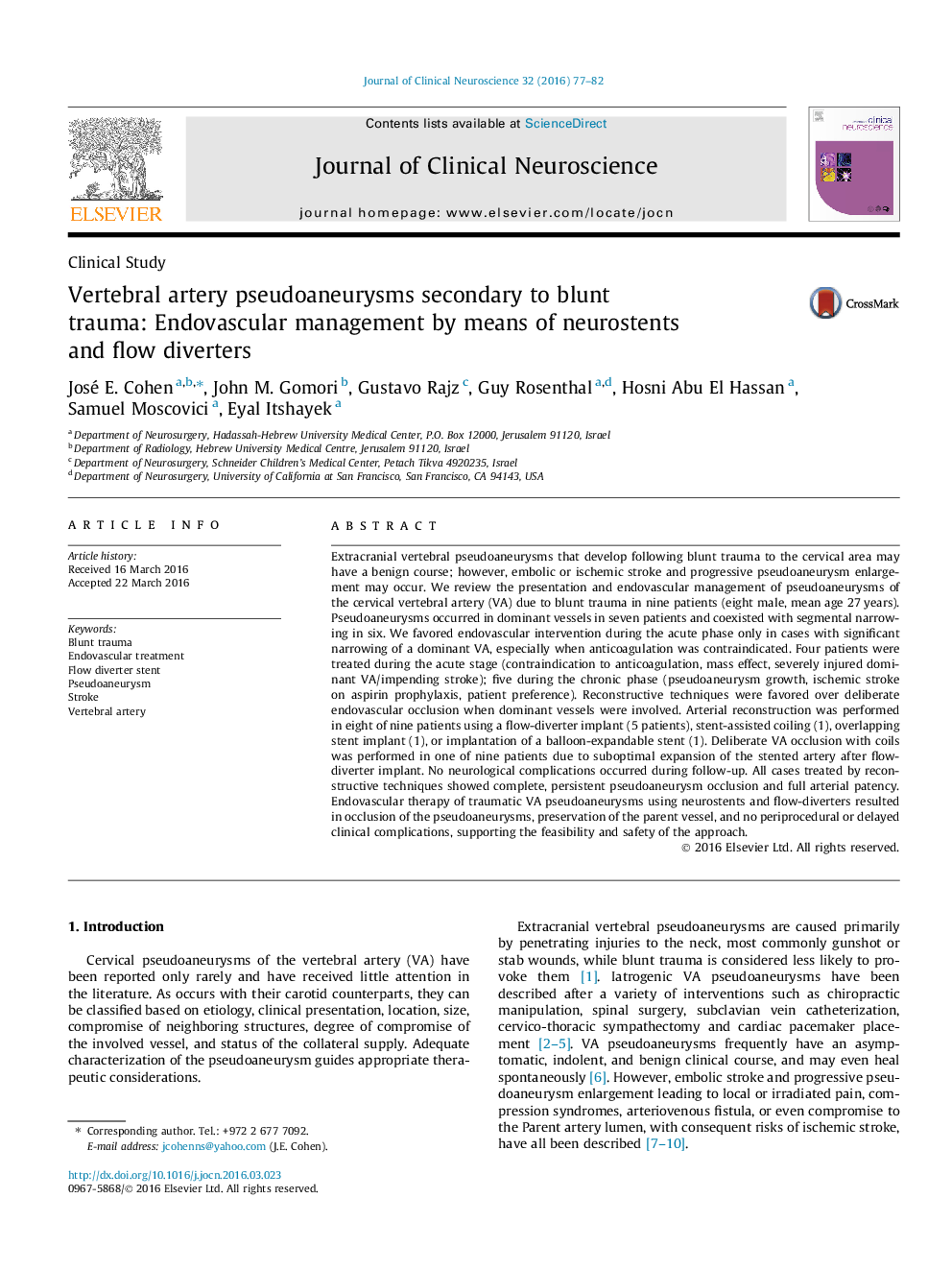| Article ID | Journal | Published Year | Pages | File Type |
|---|---|---|---|---|
| 3058047 | Journal of Clinical Neuroscience | 2016 | 6 Pages |
•Traumatic cervical vertebral artery (VA) pseudoaneurysms pose a risk of stroke or enlargement.•Endovascular arterial reconstruction of the VA is feasible and effective.•Neurostents and flow-diverters effectively preserved parent vessel patency.•Reconstructive techniques are preferred to endovascular occlusion.•There were no periprocedural or delayed complications.
Extracranial vertebral pseudoaneurysms that develop following blunt trauma to the cervical area may have a benign course; however, embolic or ischemic stroke and progressive pseudoaneurysm enlargement may occur. We review the presentation and endovascular management of pseudoaneurysms of the cervical vertebral artery (VA) due to blunt trauma in nine patients (eight male, mean age 27 years). Pseudoaneurysms occurred in dominant vessels in seven patients and coexisted with segmental narrowing in six. We favored endovascular intervention during the acute phase only in cases with significant narrowing of a dominant VA, especially when anticoagulation was contraindicated. Four patients were treated during the acute stage (contraindication to anticoagulation, mass effect, severely injured dominant VA/impending stroke); five during the chronic phase (pseudoaneurysm growth, ischemic stroke on aspirin prophylaxis, patient preference). Reconstructive techniques were favored over deliberate endovascular occlusion when dominant vessels were involved. Arterial reconstruction was performed in eight of nine patients using a flow-diverter implant (5 patients), stent-assisted coiling (1), overlapping stent implant (1), or implantation of a balloon-expandable stent (1). Deliberate VA occlusion with coils was performed in one of nine patients due to suboptimal expansion of the stented artery after flow-diverter implant. No neurological complications occurred during follow-up. All cases treated by reconstructive techniques showed complete, persistent pseudoaneurysm occlusion and full arterial patency. Endovascular therapy of traumatic VA pseudoaneurysms using neurostents and flow-diverters resulted in occlusion of the pseudoaneurysms, preservation of the parent vessel, and no periprocedural or delayed clinical complications, supporting the feasibility and safety of the approach.
